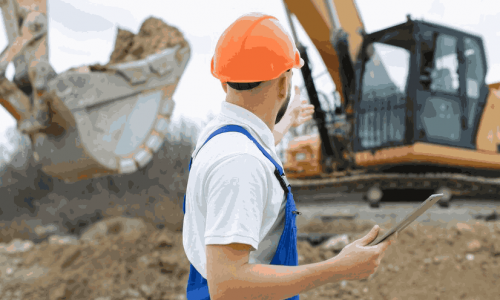Demolishing historic buildings is a complex and delicate task that requires a careful balance between preserving the past and making way for the future. Unlike standard demolition projects, historic building demolition involves unique challenges due to the architectural significance, structural integrity, and cultural value of these properties. Understanding the appropriate techniques is crucial to ensure that the demolition process respects the building’s heritage while mitigating potential hazards and preserving valuable materials. In this blog, we will explore various demolition techniques specifically tailored for historic buildings. From soft-strip methods that involve carefully dismantling interior elements to advanced deconstruction practices that salvage original materials for reuse, each approach is designed to handle the nuances of historic structures. We will also discuss regulatory considerations and best practices to ensure that these techniques align with preservation standards and local guidelines. Join us as we delve into the art and science behind preserving history through thoughtful demolition.
Demolishing historic structures is a complex and sensitive task that goes far beyond standard demolition procedures. It involves a unique set of challenges due to the age, architectural significance, and regulatory constraints associated with these buildings. This process requires careful planning, expertise, and respect for the cultural heritage that these structures represent. Here’s a detailed look at the various challenges involved:
Historic buildings often feature intricate designs, custom materials, and construction techniques that are not common in modern structures. Their architectural complexity can pose significant challenges during demolition. For example, ornamental facades, load-bearing walls, and bespoke structural elements require specialized methods and equipment to avoid damaging the building’s historical value.

Many older buildings were constructed using materials that are now known to be hazardous, such as asbestos. Identifying and safely removing these materials is crucial to protect the health of demolition workers and the surrounding community. The process of dealing with asbestos involves stringent regulations and requires specialized training and equipment.
Preserving the historical integrity of a building while demolishing it is a delicate balance. There are often requirements to retain certain features or parts of the structure for historical or educational purposes. Demolition projects must carefully document and salvage these elements to ensure they can be incorporated into future restoration projects or exhibitions.
Historic buildings are frequently protected by local, state, or national preservation laws and regulations. Obtaining the necessary permits and adhering to guidelines set by preservation societies or government agencies can be a time-consuming and bureaucratic process. Failure to comply with these regulations can result in legal consequences and damage to the reputation of the demolition firm.
Historic buildings often hold significant cultural or emotional value for the community. The process of demolishing such structures can lead to public outcry and opposition. Engaging with the community, addressing their concerns, and ensuring transparent communication are essential to managing public relations and minimizing negative reactions.
As the field of demolition evolves, new technologies and techniques are continuously being developed to address the unique challenges associated with historic building demolition. These innovations aim to make the process safer, more efficient, and more respectful of the building’s historical value. Here’s a detailed exploration of the latest advancements in this field:
Robotic demolition technology allows for highly precise and controlled dismantling of structures. These machines are equipped with advanced tools such as hydraulic shears, crushers, and excavators that can be operated remotely. This technology is especially useful for delicate work in historic buildings where precision is crucial to avoid damage to valuable architectural features.
Innovations in recycling technology enable the efficient processing and repurposing of materials from historic buildings. Advanced sorting and separation systems can distinguish between different types of materials, such as wood, metal, and masonry, allowing for their recycling or reuse. This not only minimizes waste but also helps in preserving the material heritage of historic structures.
3D scanning technology allows for the creation of detailed digital models of historic buildings before demolition begins. These models capture the building’s exact dimensions and features, which can be used for planning and simulations. This technology helps in identifying areas of structural interest or concern and ensures that the demolition process is as informed and accurate as possible.
Selective demolition, or deconstruction, involves carefully dismantling specific parts of a building rather than demolishing it in one go. Techniques such as manual dismantling and the use of specialized tools allow for the preservation of valuable or historically significant components. This approach enables the recovery of materials and artifacts that can be reused or restored.
While explosives are not typically associated with historic buildings, controlled demolitions using precision-timed explosives can be used under strict guidelines. Modern technology allows for precise detonation timing, reducing the risk of accidental damage to surrounding structures and ensuring that the explosive force is directed to minimize impact on valuable architectural elements.
Demolishing historic buildings presents the challenge of balancing modern development needs with the preservation of historical integrity. Ensuring that key historical elements are respected and preserved during the demolition process is crucial for maintaining the cultural and architectural significance of these structures. Here are the key points to consider:
Demolishing historic buildings requires a delicate balance of preserving cultural heritage while ensuring safety and efficiency. Techniques like deconstruction and selective demolition are essential for maintaining the integrity of valuable architectural elements and minimizing environmental impact. By employing advanced methods and adhering to regulations, professionals can successfully navigate the complexities of historic building demolition.
At JUNKAHAULICS – Raleigh, we are committed to handling historic demolitions with the utmost care and expertise. Located at 4801 Glenwood Ave, Suite 200, Raleigh, NC 27612, our team is ready to provide you with top-notch demolition services. For more information or to discuss your project, please contact us at (910) 403-3616. We look forward to assisting you with your demolition needs.


JUNKAHAULICS